MP4 files are a commonly used format for storing videos and audio. They are known for their compatibility and good quality; MP4 files can be played on various devices and media players like Windows Media Player and VLC Media Player. They are widely used for streaming, sharing videos online, and other multimedia purposes. However, In this article, we will provide simple ways to solve the problem of Windows being unable to play MP4 files. By following these solutions, you can easily enjoy your MP4 content on your Windows system without any difficulties.
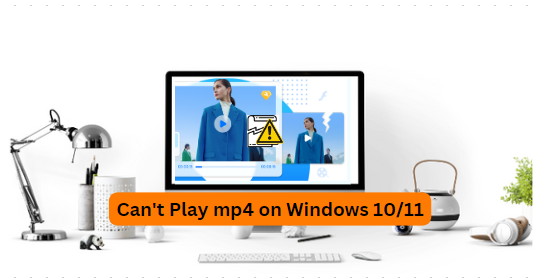
Why are my MP4 Files not playing on Windows 10/11?
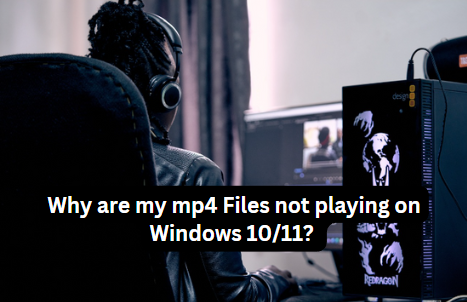
MP4 files may not play on Windows 10/11 because your computer might be missing the necessary software components called codecs. Codecs are needed to understand and play different video and audio files. To quickly fix this issue, you can install a codec pack like K-Lite Codec Pack, which will provide the required codecs for MP4 file playback on your Windows 10/11 computer.
Installing an up-to-date media player like Windows Media Player, VLC Media Player, or MPC-HC on your computer is essential. Updating your media player to the latest version can often fix compatibility problems and allow MP4 files to play correctly on Windows 10/11.
Common Reasons for MP4 Not Playing on Windows 10/11
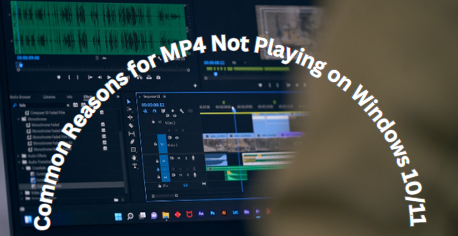
Here are some common reasons why MP4 files may not play on Windows 10/11:
| Causes | Description |
| Missing or outdated codecs: | MP4 files require specific codecs to decode the audio and video content. If your computer needs these codecs or they are updated, the MP4 file may play adequately. Installing a codec pack like K-Lite Codec Pack can help resolve this issue. |
| Corrupted or damaged file: | If the MP4 file is corrupted or damaged, it may not play on any media player. Try playing other MP4 files to check if the issue is specific to that file or if it affects all MP4 files. |
| Incompatible media player: | Outdated or incompatible media players may not support the latest MP4 file formats. Make sure you have an up-to-date media player like Windows Media Player, VLC Media Player, or MPC-HC(media player classic home cinema) installed to ensure compatibility. |
| Insufficient system resources: | If your computer lacks sufficient power or memory, it may struggle to smoothly play high-resolution or large-sized MP4 files. Close any unnecessary programs or consider upgrading your hardware if this is the case. |
| DRM-protected files: | Some MP4 files may have Digital Rights Management (DRM) protection, restricting playback on particular devices or requiring specific software. Ensure you have the necessary authorization or software to play DRM-protected MP4 files. |
Addressing these common reasons can increase the chances of successfully playing MP4 files on your Windows 10/11 system.
To Fix “can’t play MP4 on Windows 10/11,” you can try the following Methods:
- Method 1: Install the Codecs
- Method 2: Convert MP4 Videos Using Windows Media Player
- Method 3: Run the Windows Troubleshooter
- Method 4: Turn Off DirectX Video Acceleration For WMV Files
- Method 5: Play MP4 files in another media player
- Method 6: Use Yodot Video Repair Tool
Solutions to Fix ‘can’t play mp4 on Windows 10/11
Method 1: Install the Codecs to Fix mp4 Not Playing on Windows 10/11
To play different types of media files, like MP4, on media players such as Windows Media Player or VLC Player, you need something called a codec. A codec helps the media player understand and process the file, making it playable.
Without the right codec, the media player won’t know how to handle the file and won’t be able to play it properly. So, it’s important to have the correct codecs installed for the specific file types you want to play on your media player.
Step 1: Click Windows + R and type Windows Media Player.
Step 2: Go to the “Tools” menu and select “Options.” Then, click on the “Players” tab.
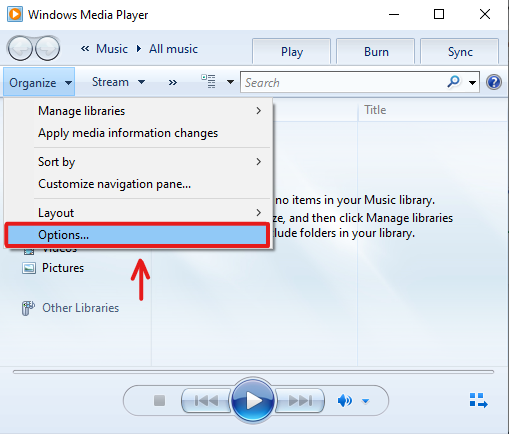
Step 3: In the “Player” tab, choose either “Once a day” or “Once a week” in the “Automatic updates” section.
Step 4: Click “OK” to automatically install the Windows Media Player codecs.
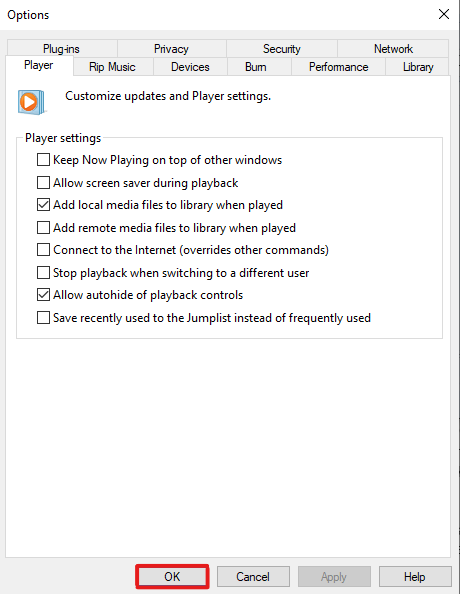
Note: If you see a message asking to install the codec, click on the “Install” button. After you install the codecs, MP4 videos should be able to play on Windows Media Player without any issues.
Note: If you see a message asking to install the codec, click the “Install” button. After you install the codecs, MP4 videos should be able to play on Windows Media Player without any issues.
Method 2: Convert MP4 Videos Using Windows Media Player
Suppose you cannot find suitable codecs to play your MP4 files on Windows Media Player (WMP). In that case, you have the option to convert the MP4 video file to a format that is compatible with WMP. You can achieve this using the free VLC media player to convert video files.
To convert MP4 files to a format supported by Windows Media Player, follow these steps:
Step 1: Open your MP4 file in Windows Media Player.
Step 2: Click on “Organize” and choose “Options“.
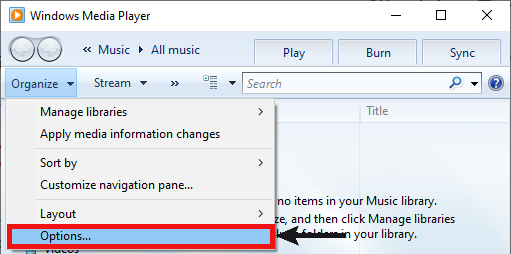
Step 3: Switch to the “Rip Music” section.
Step 4: Click the “Change” button to specify the destination location for the converted video file.
Step 5: Under “Format” in the “Rip settings,” select “MP3“.
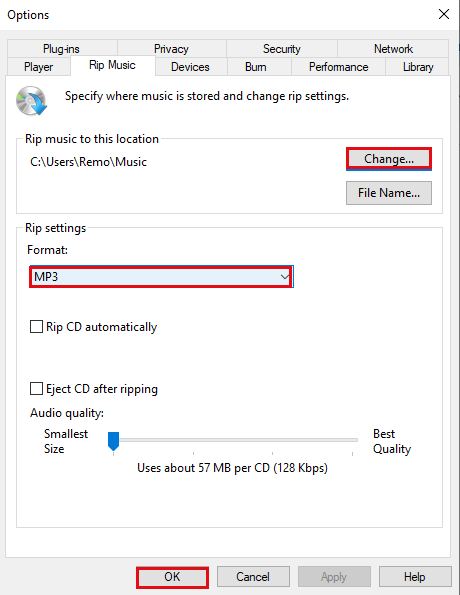
Step 6: Hit the “OK” button to start the conversion process.
Following these steps, you can convert your MP4 file to MP3 format using Windows Media Player.
Note: It’s recommended to try these steps on a copy of your MP4 video file. This way, you can keep the original file safe while experimenting with the modification process.
Method 3: Run the Windows Troubleshooter to Fix Can’t Play mp4 on Windows 10/11
Windows 10 and 11 have a built-in troubleshooting tool to help you fix video playback problems. Suppose you cannot play MP4 files on your Windows system. You can use the troubleshooter to resolve video errors and get your videos working again.
To troubleshoot MP4 playback issues on Windows 10/11, you can follow these steps:
Step 1: To open the Settings menu in Windows 10/11, press the Windows key and the letter “I” simultaneously.
Step 2: On the left pane, click “System” to access the System settings in Windows 10/11.
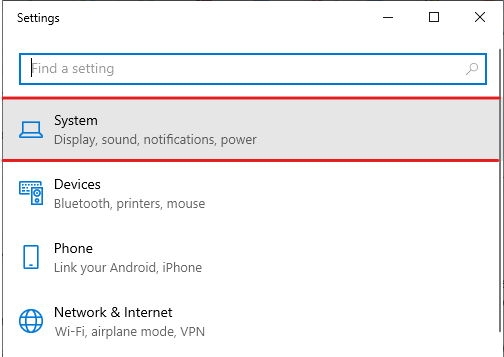
Step 3: On the right pane, select the “Troubleshoot” option by clicking on it.
Step 4: Click “Other troubleshooters” to view a list of available troubleshooting options for various problems.
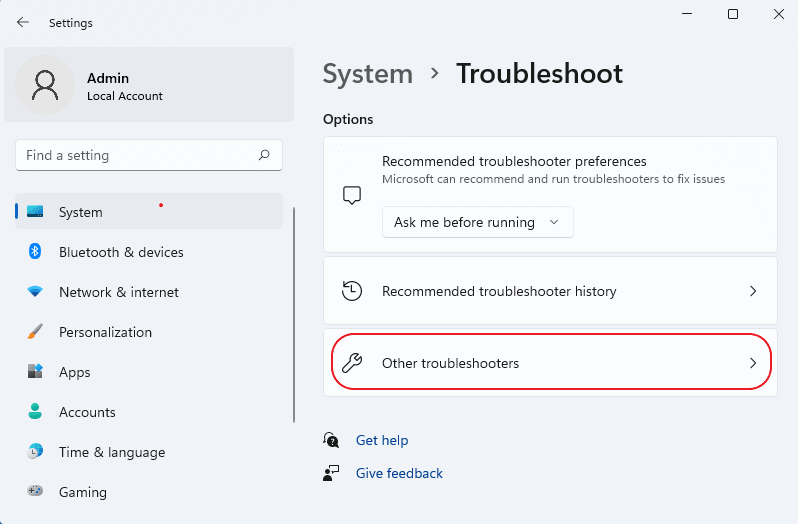
Step 5: Scroll down the list until you find “Video Playback,” and click on the “Run” button to initiate the troubleshooting process specifically for video playback issues.
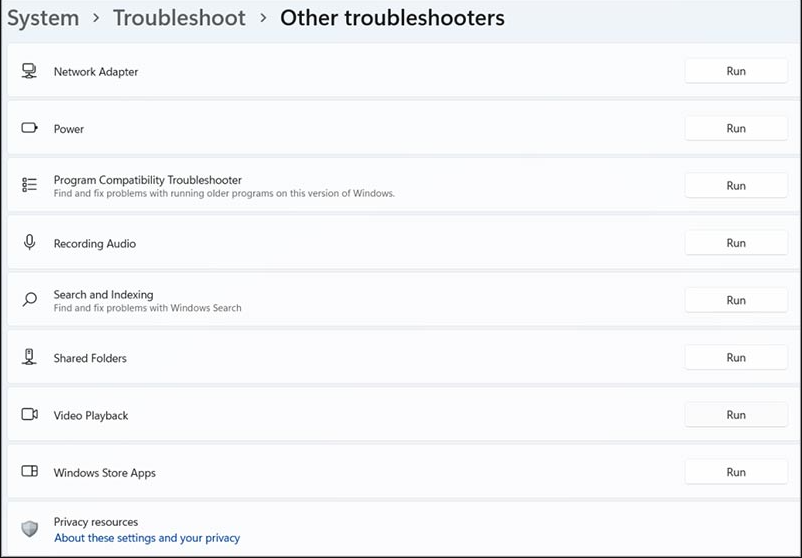
Note: After completing the troubleshooting, restart your Windows 11 system and try playing MP4 files in your media player. This should resolve the issue and allow you to play MP4 files without problems on Windows 11.
Method 4: Turn Off DirectX Video Acceleration For WMV Files
To fix the MP4 playback issue in Windows Media Player, follow these five steps:
Step 1: Open Windows Media Player.
Step 2: Click on “Organize” and select “Options.”
Step 3: Go to the “Performance” tab.
Step 4: Uncheck “Turn on DirectX Video Acceleration for WMV files.“
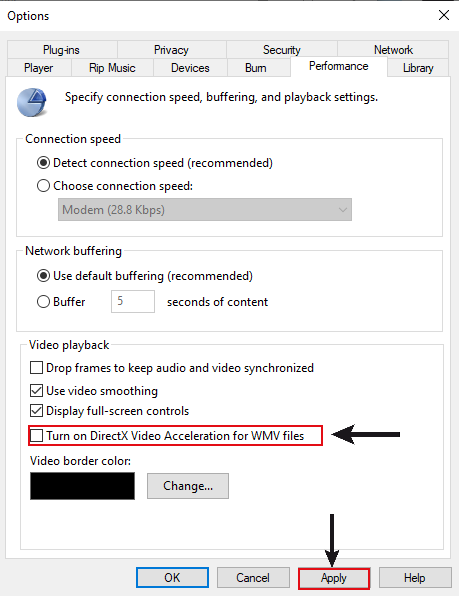
Step 5: Click “Apply” and “OK” to save the changes.
After making these adjustments, restart Windows Media Player. This should resolve the MP4 playback problem.
Method 5: Play MP4 files in another media player
If you’re having trouble playing MP4 files on Windows, try using a different media player like VLC Media Player, which supports the MP4 format and works well on Windows 11 and 10.
You can explore other options like Movies & TV apps, DivX Player, KMPlayer, 5K Player, RealPlayer, or QuickTime.
Additionally, Windows 10/11 users can utilize the improved default ‘Media Player‘ as an alternative to Windows Media Player. Experimenting with different media players can help you find a suitable solution for playing your MP4 files smoothly.
Method 6: How To Fix Can’t Play MP4 on Windows 10/11 Using Yodot Video Repair Tool?
Yodot Video Repair Tool fixes damaged or corrupted video files simply and easily. It supports various video formats and resolves issues like playback errors and audio-video synchronization problems. Its user-friendly interface lets you quickly select the damaged video and initiate the repair process. It works on Windows and Mac systems, making it a convenient solution for repairing videos.
To repair video files that are corrupted or damaged using Yodot Video Repair Tool, download and install the tool and follow the below-mentioned steps:
Step 1: Launch Yodot Video Repair Tool on your computer, click Select file, and select the damaged video file that must be repaired.
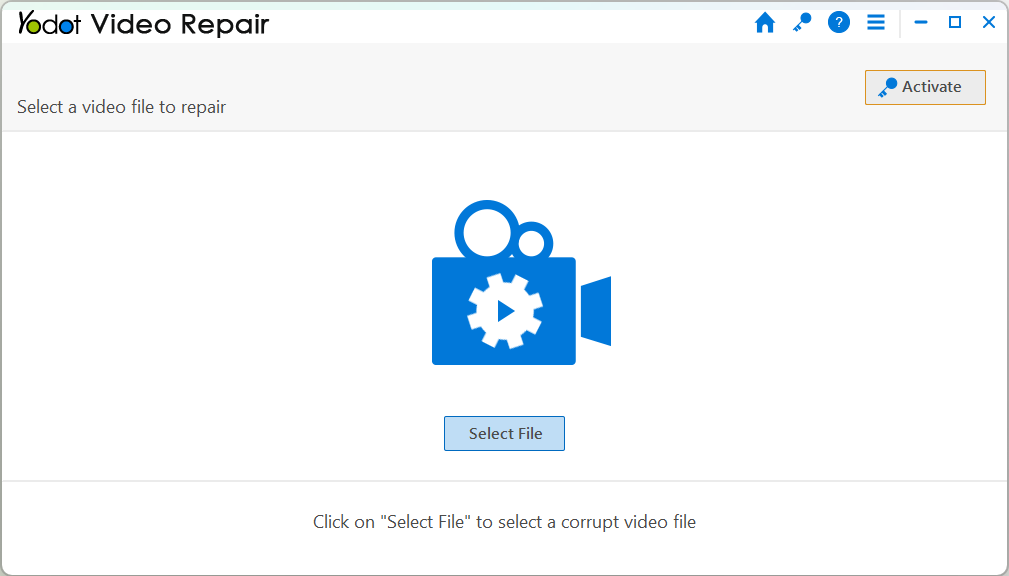
Step 2: Provide a healthy reference video for repairing a MOV file. If you are repairing videos of any other file format, move on to Step 3.
Step 3: Click on Repair to start the damaged video file repair process.
Step 4: After completion of the corrupt video repair process, you can preview the repaired video file.
Step 5: If you are satisfied with the video repair process, activate the tool and save the repaired video file into the desired location.
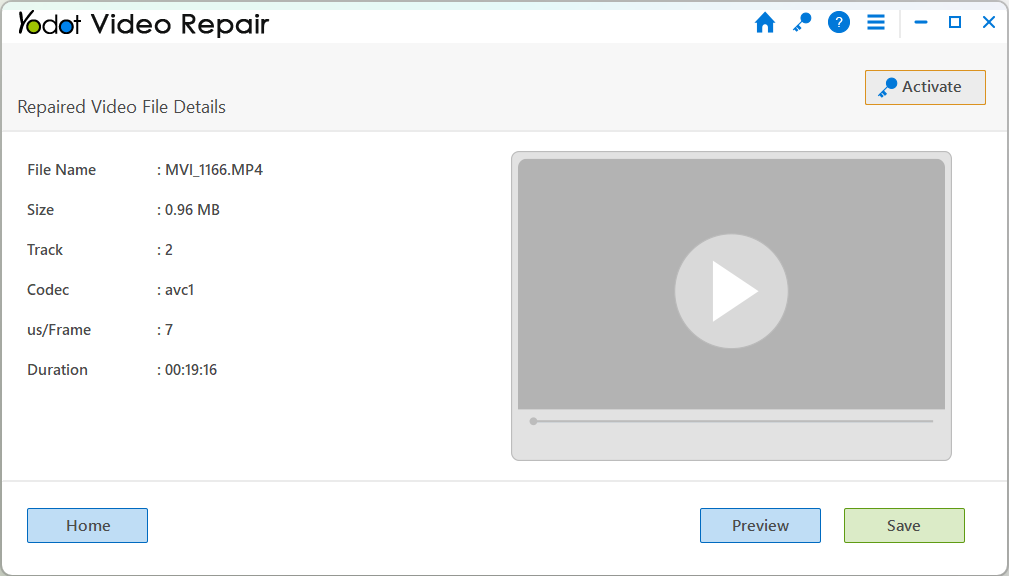
According to maketecheasier.com – Easy-to-use Video Repair Software
The interface is simple and easy to understand. Yodot Video Repair Software is self-explanatory; if you have a broken video file, Yodot can fix it. It does this by making a copy of the file and working on that copy, meaning there’s no risk to your original file. It also separates the audio and video frames and recombines them to make a playable file version. Any missing or corrupted frames are skipped, allowing the file to play without crashing.

Conclusion:
If you face MP4 playback problems on Windows 10/11, install codecs, troubleshoot video playback, or use alternative media players. Additionally, the Yodot Video Repair Tool can help fix corrupted MP4 files. Keep your system updated and explore reliable solutions for a smoother MP4 playback experience on Windows.
Frequently Asked Questions:
No, MP4 files themselves cannot give you viruses. However, sometimes people can hide viruses inside files that are made to look like MP4 files. To stay safe, be careful when downloading MP4 files from sources you don’t know. Make sure your antivirus software is updated to protect your computer.
Yes, popular media players like VLC Media Player, Movies & TV app, DivX Player, KMPlayer, 5K Player, RealPlayer, and QuickTime are known to support MP4 files. They can be used as alternatives to Windows Media Player.
Codecs are software components that encode and decode audio and video data. They are vital for media players to properly play different file formats, including MP4. Installing the required codecs ensures your media player can handle MP4 files correctly.